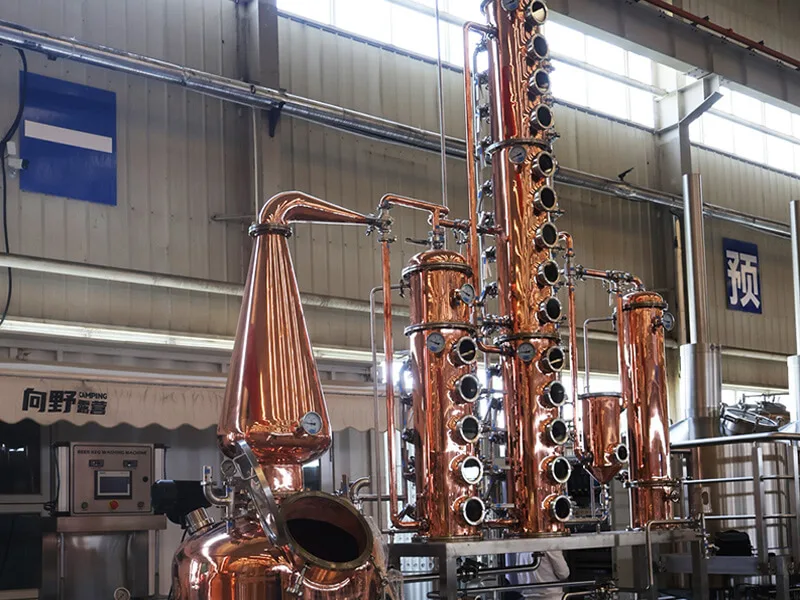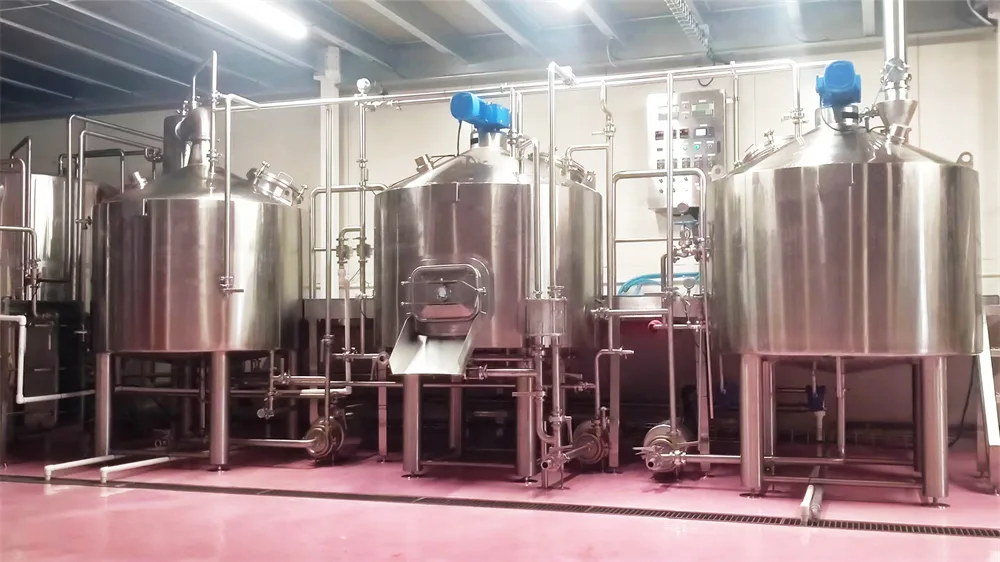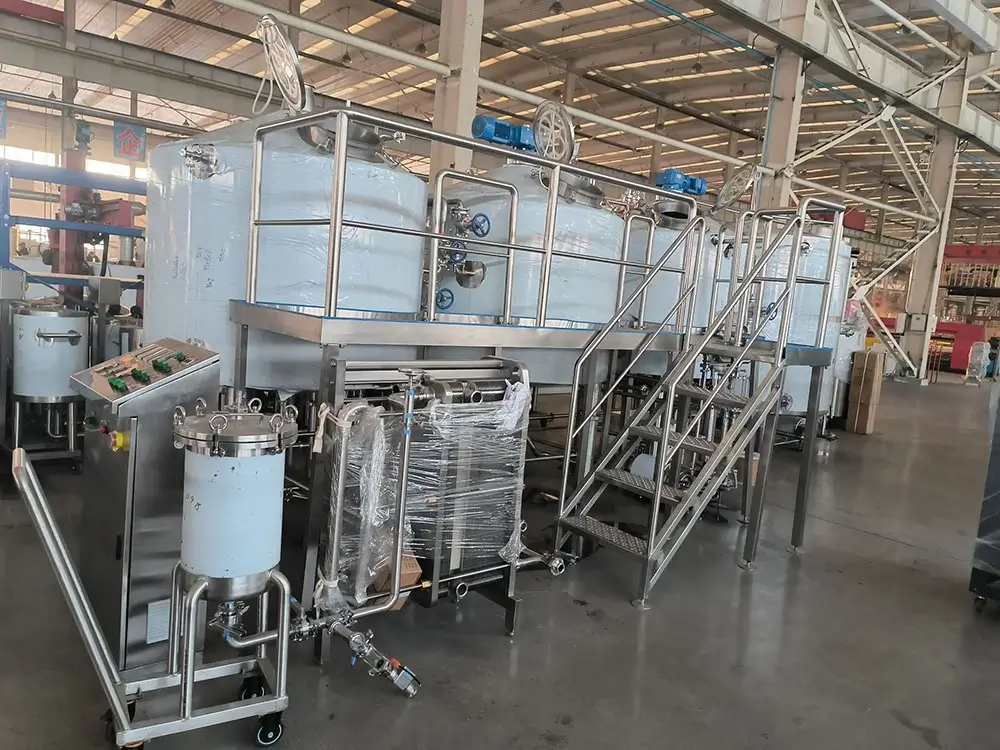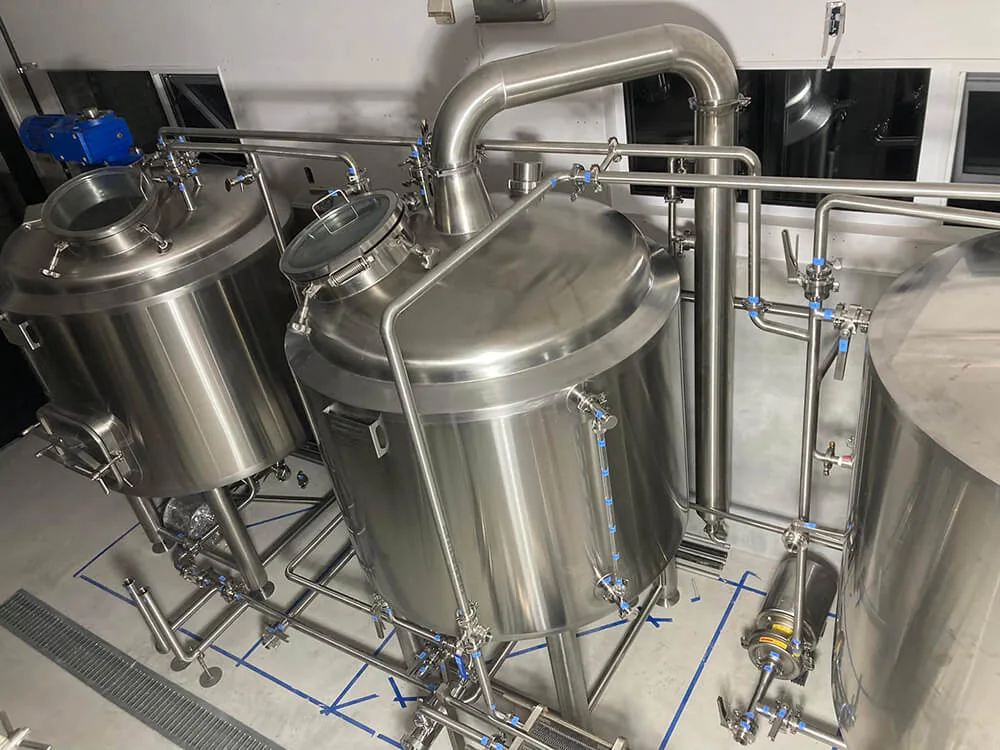When it comes to distilled spirits, vodka stands apart from whisky and brandy in its pursuit of clarity and purity rather than complexity of taste. Unlike whisky, which emphasizes layered flavors from grain, barrel aging, and limited distillation, vodka focuses on producing a clean, neutral spirit. It is typically colorless, transparent, and free of impurities, making it a versatile base for cocktails or flavored infusions.
In this blog, we will explore the role of distillery equipment in vodka production, from raw materials and distillation methods to equipment configuration and material selection.
Vodka vs. Whisky: A Different Brewing Philosophy
- Whisky is usually distilled twice, retaining grain- and fruit-derived aromas.
- Vodka undergoes multiple distillations (often three or more) to maximize purity.
- After distillation, vodka is filtered with activated carbon to remove trace impurities and ensure smoothness.
- The resulting spirit is strong, neutral, and free from the fruity and grainy notes found in whisky.
Some producers also make flavored vodkas, incorporating botanicals, fruits, or herbs during the process for a richer, more niche taste profile.
Classification of Tower Distillers
Modern vodka distillery equipment often relies on column stills (also called tower stills). These cylindrical stills are designed for continuous operation and high-efficiency separation.
Key Classifications:
- Heating Method
- Electric heating or steam heating.
- Steam injection or steam-driven reboilers are commonly used in industrial setups.
- Reflux Promotion
- Overhead condensers that condense and return vapor.
- Preheating of alcohol solution between rectifying plates.
- Recycling of distilled spirits back into the still to increase reflux.
- Separator & Rectifier
- Continuous distillation occurs in two stages: separation of volatiles, then rectification.
- This can be performed in separate towers (separator + rectifier) or in a combined multi-stage column.
Components of Vodka Distillery Equipment
A professional vodka still may include the following features:
- Beer Column: Performs the first distillation. Fermented wash meets rising steam, raising alcohol concentration to about 40%–60%.
- Rectifying Column: The core purification unit, concentrating alcohol up to 96.5% ABV. Trays or packing provide large surface area, enabling repeated micro-distillations.
- Reflux System: Partially condenses vapor and returns it into the column, enhancing purification. A higher reflux ratio yields higher purity.
- Dephlegmator & Condenser: The dephlegmator at the top generates reflux; the product condenser fully liquefies the purified alcohol vapor.
- Reboiler: Located at the base of the rectifying column, continuously generates steam to drive heat and mass transfer.
Performance:
- Whiskey Column: Produces up to 160 proof in one run.
- Vodka Column: Capable of reaching 190 proof in one run.
- For best results, a stripping run is performed using the whiskey column, followed by a vodka run using the rectification column.
This flexibility allows the same equipment to produce multiple spirit types including whiskey, rum, brandy, gin, and vodka.
Vodka Production Process
The production of vodka typically involves the following steps:
- Mashing – Grains such as wheat, rye, corn, or potatoes are mashed to release fermentable sugars.
- Fermentation – Yeast converts sugars into alcohol.
- Distillation – Multiple runs through a column still refine the spirit.
- Filtration – Activated carbon filtration removes congeners and impurities.
- Dilution & Blending – Water is added to achieve the desired alcohol by volume (ABV).
The master distiller ensures careful removal of “heads” and “tails,” which contain unwanted compounds like ethyl acetate and ethyl lactate.
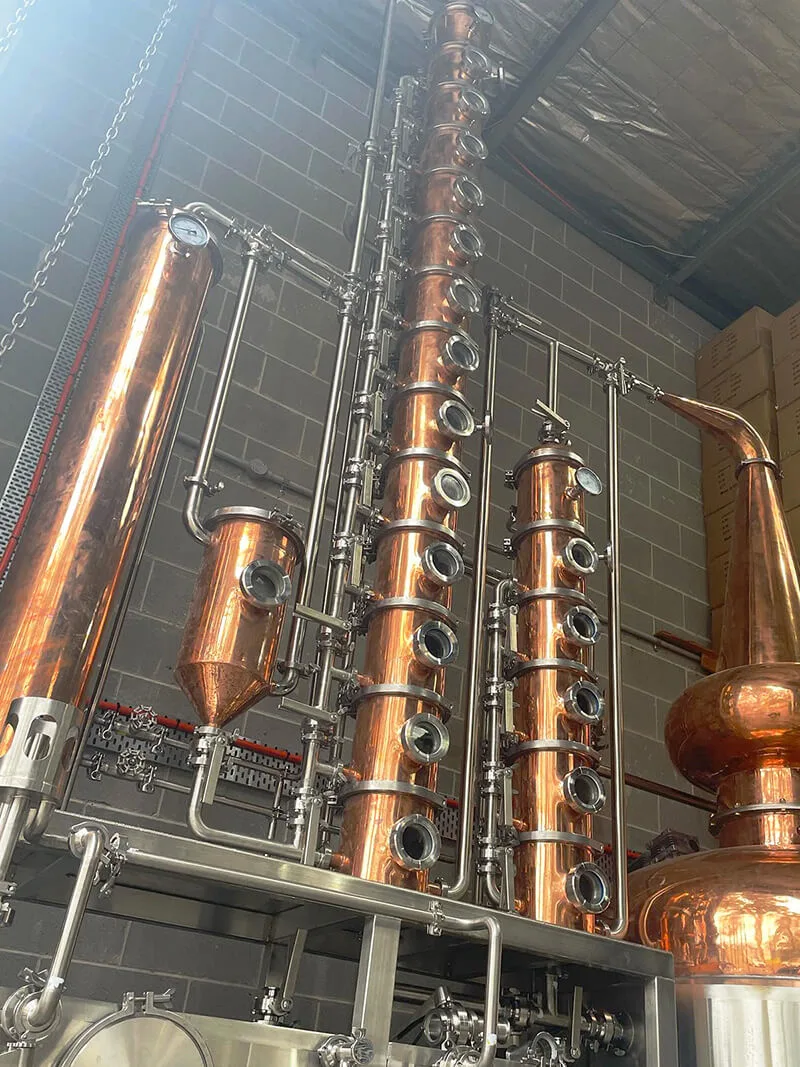
Types of Vodka
- Neutral Vodka – The standard, clear spirit made from grains or potatoes, distilled and filtered for maximum purity.
- Flavored Vodka – Produced by infusing botanicals or fruits, similar to gin production methods. Examples: Apple Vodka, Chili Vodka.
- Green Vodka – A traditional Polish specialty, infused with buffalo lemongrass for a grassy aroma and straw-colored appearance.
Material Selection: TP2 Copper + SUS304 Stainless Steel
High-quality distillery equipment is essential for ensuring spirit purity and taste.
- TP2 Copper: All parts in contact with wine liquid and vapor are made of copper, which reacts with sulfur compounds to enhance aroma and smoothness.
- SUS304 Stainless Steel: Ensures durability, hygiene, and resistance to corrosion.
Our pot and column stills use TP2 copper sourced directly from certified Chinese copper manufacturers, guaranteeing superior performance and consistency.
Conclusion
Producing premium vodka requires more than just skill—it requires precision-engineered distillery equipment designed for purity, efficiency, and flexibility. From the copper stills and rectification columns to activated carbon filtration systems, every component plays a critical role in shaping the final spirit.
Whether you are producing neutral vodka, flavored vodka, or exploring other spirits like gin and brandy, choosing the right distillery equipment is the foundation of quality.
👉 Interested in learning more about professional distillery equipment, technical details, or pricing? Contact us today to discuss customized solutions for your production needs.

